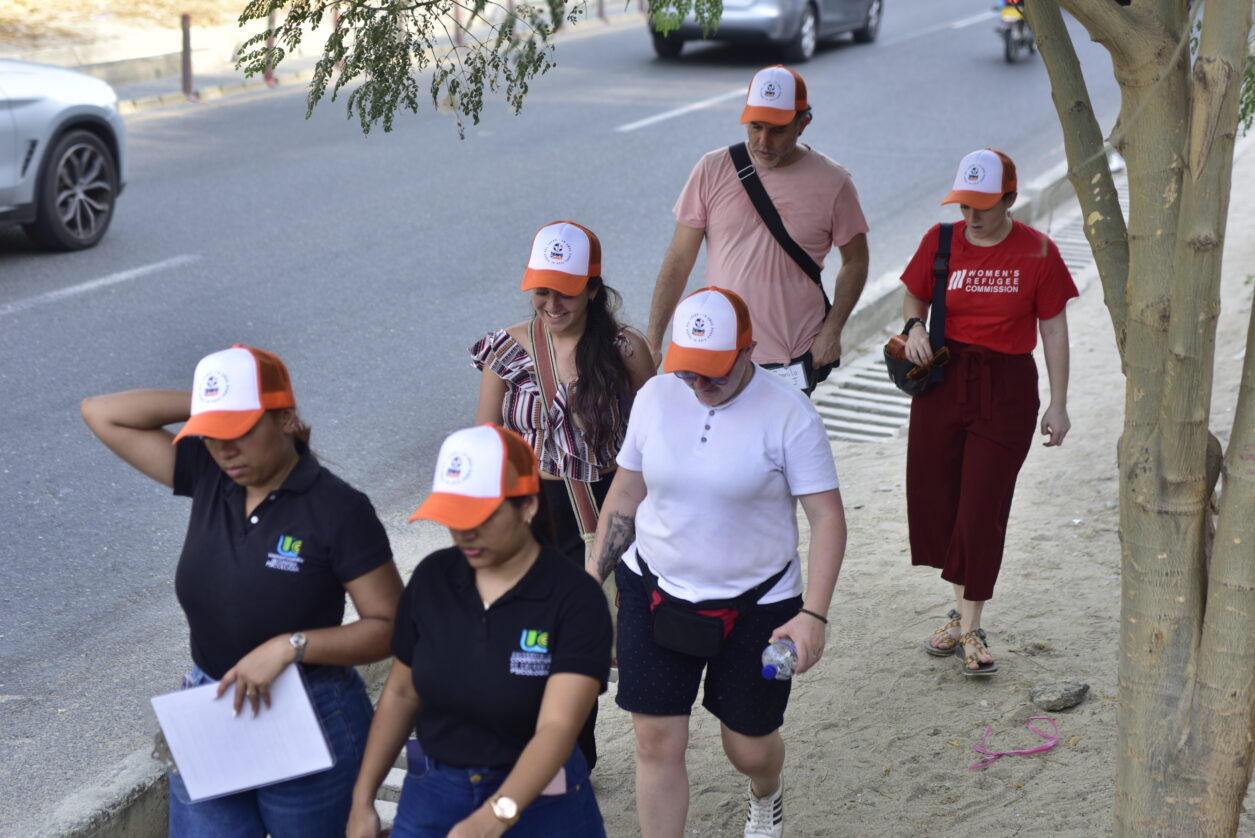
Last December, our weekly meetings began. Six squares would pop up on Zoom, reflecting the faces of myself, my Women’s Refugee Commission (WRC) colleague, and our partners from Fundacion Tiempo de Juego (TdJ), a youth development organization based in Colombia. We were meeting to discuss our joint project: introducing the I’m Here approach in Colombia.
WRC developed the I’m Here approach in 2016—a set of guidelines to help humanitarian organizations identify where adolescent girls live, what their needs are, and what services and resources are (or are not) available for them. The I’m Here approach is used as an entry point to work with adolescent girls themselves to develop programs to improve their safety, health, and well-being from the first days of a crisis. It has been implemented in refugee camps and urban settings in countries around the world, including in Bangladesh, Lebanon, and South Sudan. The approach has expanded girls’ access to sexual and reproductive health information and services, provided opportunities to develop critical skills for future employment, and helped them develop social networks.
In direct contrast to their male counterparts, as many adolescent girls grow older, their worlds shrink—they have fewer opportunities, more restrictions and responsibilities. TdJ’s programming aims to expand adolescents’ freedom to explore ways of expressing themselves and to create safe spaces where they can make mistakes in a nonjudgmental atmosphere and learn life skills. In doing so, TdJ emphasizes the value of this life stage and helps adolescents develop healthy habits and transitions into adulthood.
Tiempo de Juego Helps Adolescents Develop Their Full Potential
For over a decade, TdJ has been using play to inspire young people to become agents of change and transform their communities throughout Colombia. Through sports, arts, workshops on entrepreneurship, and technology programs, TdJ teaches life and leadership skills and psychosocial skills to children and adolescents.
Many children and adolescents growing up in Colombia’s most vulnerable communities have been displaced by long-running civil conflict or are refugees from Venezuela. They face daily risks associated with inadequate economic opportunities, limited sexual and reproductive health services, exposure to gangs, and violence related to drug trafficking. By participating in TdJ’s programs, adolescent girls and boys can develop their full potential and positively shape their future.
Using the I’m Here Approach
In April 2024, WRC visited Santa Marta, Colombia, to implement the I’m Here approach with TdJ. As we started the project, we began to unpack the reasons why fewer adolescent girls than boys were participating in their programming. We discussed the challenges faced by adolescent girls in Colombia, including household responsibilities, lack of higher education opportunities, domestic violence, child prostitution due to sex tourism, and an overarching culture of machismo. For adolescents who have been displaced by crisis or conflict, a lack of legal status compounds these challenges and further limits access to education and employment.
By integrating I’m Here into their already robust approach to engaging adolescents in their programs, TdJ is activating new ways of assessing the needs and challenges of adolescents in Colombia. It is using the approach to identify specific subgroups of adolescent girls in local communities and then invite those girls to participate in research activities that will inform future programs. Following a two-day training by WRC, TdJ staff spent a day going door to door in the communities of Santa Marta and Cienaga collecting information on all youth under the age of 25 in a household. The survey identified more than 150 girls between the ages of 10 and 19 who TdJ hadn’t known about prior to our visit. It showed that 15 percent of girls aged 14 and older cohabitate with a partner and 21 percent have children. The survey also found that about 80 percent of households experienced food insecurity over the past year. All of this information will shape future engagement and program design and ensure that content is better tailored to these groups.
The TdJ team has subsequently conducted research activities with nine groups of adolescents, some of whom were already involved in programming and some not. The next steps are for TdJ to strategically integrate this comprehensive information into their program goals and objectives to address the priority needs of these adolescents in their communities.
Looking Ahead
With this project, we hope to highlight and measure the impacts of TdJ’s programming on adolescent girls in Colombia as an example for similar organizations seeking to better engage and support adolescents around the world.
Displaced adolescent girls have been overlooked too long. With the I’m Here approach, we’re working to change that. With the right support and opportunities, they can become strong, resilient women, well set to support themselves and their families and play leading roles in their communities.
For more on our project with Tiempo de Juego in Colombia, read “Moving Beyond a One-Size-Fits-All Plan for Working with Adolescent Girls Affected by Conflict or Crisis.”







